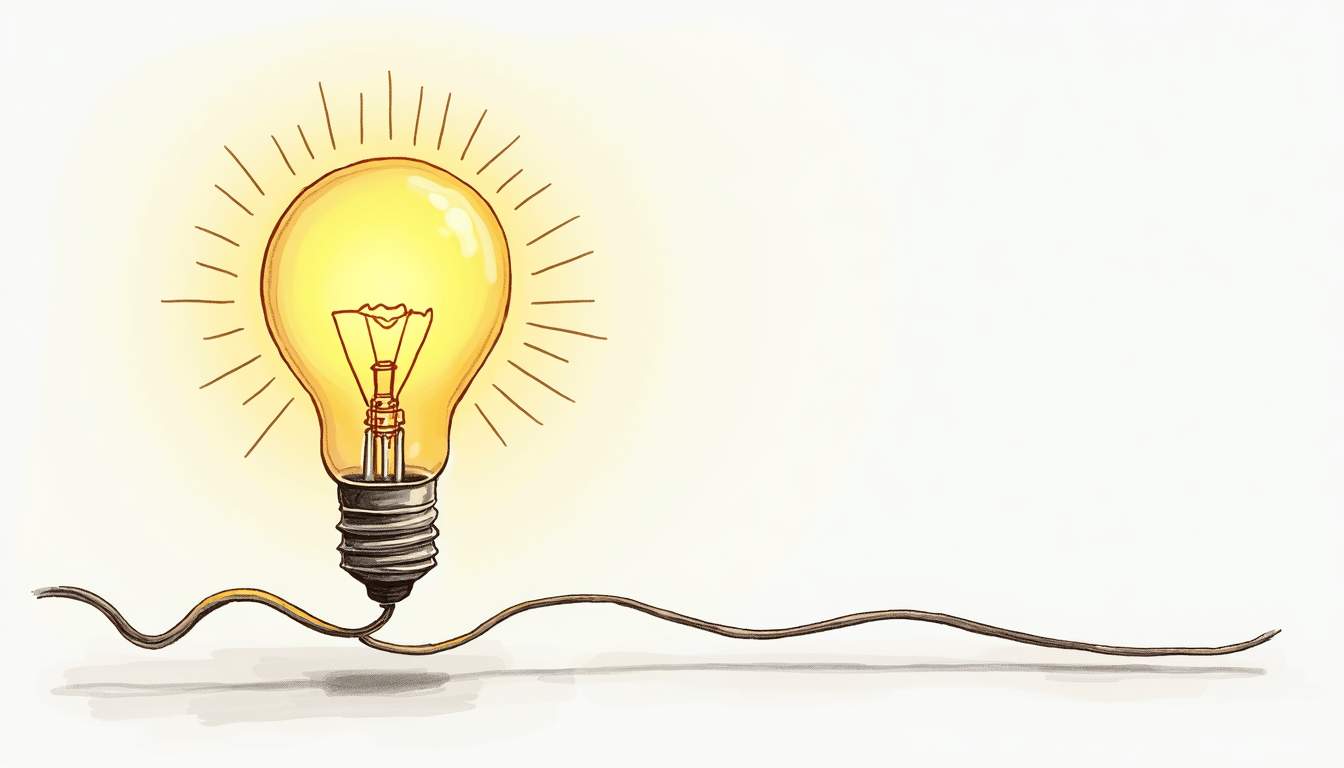
There’s something unsettling about a flickering light bulb. One moment it’s steady, the next it’s flashing on and off like a tiny disco ball. Flickering lights aren’t just annoying-they can signal underlying electrical issues that need attention. Understanding why a light bulb flickers can save you time, money, and even prevent potential hazards.
Why Do Light Bulbs Flicker?
Flickering happens when the electrical current powering the bulb isn’t steady. This can be due to a variety of reasons, ranging from simple to serious. Sometimes it’s just a loose connection, other times it could be a sign of faulty wiring or a problem with your electrical panel.
Different types of bulbs also flicker for different reasons. Incandescent bulbs tend to flicker less, but when they do, it’s often due to voltage fluctuations. LED and CFL bulbs are more sensitive to changes in current and can flicker if the dimmer switch isn’t compatible or if the bulb itself is defective. Understanding these nuances can help homeowners troubleshoot the issue effectively and determine whether a simple fix will suffice or if professional intervention is necessary.
Common Causes of Flickering
Here are some of the most frequent culprits behind a flickering light bulb:
- Loose Bulb or Socket: The bulb might not be screwed in properly, or the socket could be worn out.
- Faulty Switch: A bad light switch can cause inconsistent power flow.
- Voltage Fluctuations: High demand from other appliances or issues with your utility provider can cause voltage dips.
- Incompatible Dimmer Switch: Not all LEDs or CFLs work well with standard dimmers.
- Wiring Issues: Loose or damaged wiring can cause intermittent power delivery.
- Bulb Defects: Sometimes the bulb itself is just faulty or near the end of its life.
In addition to these common causes, environmental factors can also play a role in flickering lights. For instance, extreme weather conditions can affect the stability of the electrical grid, leading to fluctuations that may cause lights to flicker. Furthermore, if you live in an older home, the electrical system may not be equipped to handle the demands of modern appliances, resulting in more frequent flickering. Regular maintenance and upgrades to your electrical system can mitigate these issues, ensuring a more stable and reliable lighting experience throughout your home.
Another aspect to consider is the impact of energy-efficient lighting on flickering. While LED and CFL bulbs are celebrated for their energy savings, their sensitivity to electrical variations can lead to flickering if not properly matched with compatible fixtures and dimmers. Homeowners may find that investing in high-quality, compatible bulbs and fixtures can significantly reduce flickering, providing a more pleasant and consistent lighting environment. Understanding these dynamics can empower individuals to make informed decisions about their lighting choices and electrical systems. For reliable assistance and expert solutions, you can visit Electrician Singapore.
Step-by-Step Troubleshooting
When a light bulb flickers, it’s tempting to just replace the bulb and move on. But if the flickering continues, it’s important to dig deeper. Here’s a straightforward guide to help you pinpoint the problem.
1. Check the Bulb
Start with the simplest step. Turn off the light and let the bulb cool down. Then, carefully unscrew it and inspect for any signs of damage like blackening or broken filaments. Replace the bulb with a new one to see if the flickering stops.
If the new bulb flickers as well, the problem isn’t the bulb itself.
2. Tighten the Bulb and Inspect the Socket
Sometimes the bulb isn’t screwed in tightly enough, or the socket has corrosion or damage. Make sure the bulb is snug in the socket. If you notice any discoloration or burn marks inside the socket, it might need replacement or professional attention.
Additionally, check the socket for any debris or dust that may have accumulated over time. A clean socket ensures a better connection and can help prevent flickering. If cleaning doesn’t resolve the issue, it may be wise to consider replacing the entire fixture, especially if it’s older.
3. Test the Light Switch
Flip the switch on and off a few times. If the flickering seems to coincide with the switch’s position or movement, the switch could be faulty. Replacing a light switch is usually straightforward, but if you’re uncomfortable working with electrical components, call an electrician.
Moreover, consider the age of the switch. Older switches can wear out over time, leading to inconsistent connections. If you notice that the switch feels loose or doesn’t click securely, it might be time for an upgrade to a more reliable model.
4. Examine Other Lights and Appliances
Does the flickering happen only with one bulb or multiple lights? If several lights flicker simultaneously, the issue might be with your home’s electrical system or even the power supply from your utility provider.
Try turning off other high-power appliances like air conditioners or refrigerators to see if the flickering stops. Large appliances can cause voltage drops when they cycle on. Additionally, consider the time of day; if the flickering occurs during peak usage hours, it may indicate that your home is drawing too much power, leading to fluctuations in voltage.
5. Check for Dimmer Compatibility
If the flickering occurs with LED or CFL bulbs on a dimmer switch, the dimmer might not be compatible. Older dimmers designed for incandescent bulbs often don’t work well with modern bulbs. Switching to a dimmer designed for LEDs or removing the dimmer can solve the problem.
It’s also worth noting that some dimmers have minimum wattage requirements, which can affect performance. If you’re using several low-wattage LED bulbs, ensure that the combined wattage meets the dimmer’s specifications to avoid flickering.
6. Inspect Electrical Wiring
Loose or damaged wiring is a serious cause of flickering and can be dangerous. Look for signs like scorch marks on outlets, buzzing sounds, or flickering that worsens when you touch a switch or outlet.
If you suspect wiring issues, it’s best to call a licensed electrician. Electrical wiring problems can lead to fires if left unchecked. Furthermore, consider having a professional conduct a thorough inspection of your home’s electrical system, especially if your home is older or if you’ve recently experienced any electrical upgrades or renovations. Regular maintenance can help prevent future issues and ensure your home remains safe and efficient.
When to Call a Professional
Not all flickering light issues can be safely fixed by a homeowner. If you’ve tried the basic troubleshooting steps and the flickering persists, or if you notice any of the following signs, it’s time to seek professional help:
- Frequent flickering across multiple lights or rooms
- Burning smells or scorch marks near outlets or switches
- Buzzing or crackling sounds from fixtures or switches
- Flickering that worsens when using major appliances
- Visible damage to wiring or electrical panels
An electrician can perform a thorough inspection, identify hidden problems, and ensure your home’s electrical system is safe and reliable. They are trained to recognize signs of electrical overload, which can lead to more serious issues such as fires or electrical shock. Additionally, they have the tools and expertise to safely handle high-voltage systems, something that is crucial when dealing with potentially hazardous situations.
Moreover, hiring a professional can save you time and money in the long run. While DIY fixes might seem appealing, they can sometimes exacerbate the problem or lead to further complications. A qualified electrician can not only resolve the immediate flickering issue but also provide valuable advice on how to improve your home’s overall electrical efficiency, potentially recommending upgrades or changes that could prevent future problems. This proactive approach can enhance your home’s safety and functionality, ensuring that your electrical system meets modern standards and your family’s needs.
Preventing Flickering Lights
Once you’ve addressed the flickering, there are steps you can take to prevent it from happening again. Regular maintenance and mindful usage go a long way.

Use Quality Bulbs
Invest in good-quality bulbs from reputable brands. Cheap or counterfeit bulbs often have inconsistent performance and shorter lifespans.
Match Bulbs with Fixtures and Switches
Make sure your bulbs are compatible with your fixtures and dimmer switches. Check the packaging or manufacturer’s specifications for compatibility information.
Maintain Electrical Components
Periodically check your light fixtures, switches, and outlets for signs of wear or damage. Tighten loose bulbs and replace any faulty switches promptly.
Avoid Overloading Circuits
Don’t plug too many high-power devices into the same circuit. Overloading can cause voltage drops that lead to flickering and other electrical problems.
Schedule Regular Electrical Inspections
Especially in older homes, it’s wise to have an electrician inspect your wiring and electrical panel every few years. Early detection of issues can prevent flickering and more serious hazards.
Understanding the Risks of Ignoring Flickering Lights
It might be tempting to ignore a flickering bulb, chalking it up to a minor annoyance. However, flickering can sometimes be a warning sign of electrical trouble that could escalate.

Electrical issues that cause flickering can lead to overheating, short circuits, or even electrical fires. Additionally, inconsistent lighting can strain your eyes and cause headaches over time.
Taking flickering seriously and addressing it promptly ensures your home stays safe and comfortable.
Conclusion
A flickering light bulb is more than just a nuisance. It’s a signal that something in your electrical system needs attention. By following the troubleshooting steps outlined here, you can often identify and fix the problem yourself. When in doubt, don’t hesitate to call a professional electrician to keep your home safe.

Remember, a steady light means peace of mind. Don’t let flickering bulbs dim your day.